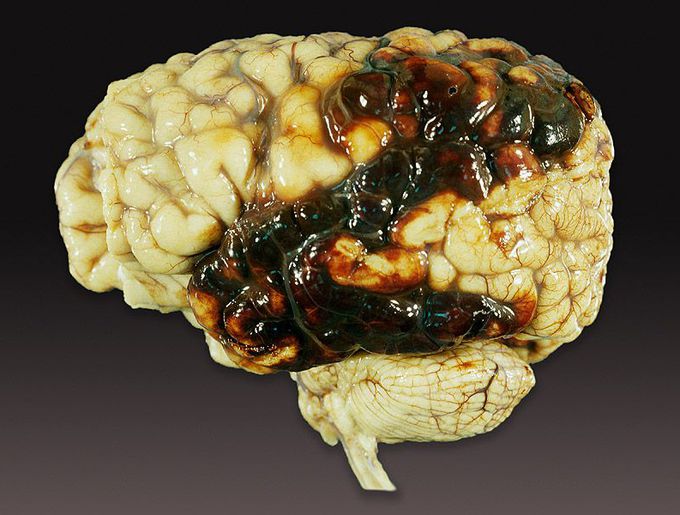


INTRACRANIAL HEMORRHAGE (ICH)
Intracranial hemorrhage (ICH) refers to acute bleeding inside your skull or brain. It’s a life-threatening emergency. What are the types of ICH? There are four types of ICH: epidural hematoma subdural hematoma subarachnoid hemorrhage intracerebral hemorrhage Epidural hematoma A hematoma is a collection of blood, in a clot or ball, outside of a blood vessel. An epidural hematoma occurs when blood accumulates between your skull and the outermost covering of your brain. It typically follows a head injury, and usually with a skull fracture. High-pressure bleeding is a prominent feature. If you have an epidural hematoma, you may briefly lose consciousness and then regain consciousness. Subdural hematoma A subdural hematoma is a collection of blood on the surface of your brain. It’s typically the result of your head moving rapidly forward and stopping, such as in a car accident. However, it could also suggest abuse in children. This is the same type of movement a child experiences when being shaken. A subdural hematoma is more common than other ICHs in older people and people with history of heavy alcohol use. Subarachnoid hemorrhage A subarachnoid hemorrhage is when there’s bleeding between the brain and the thin tissues that cover the brain. These tissues are called meninges. The most common cause is trauma, but it can also be caused by rupture of a major blood vessel in the brain, such as from an intracerebral aneurysm. A sudden, sharp headache usually comes before a subarachnoid hemorrhage. Typical symptoms also include loss of consciousness and vomiting. Intracerebral hemorrhage Intracerebral hemorrhage is when there’s bleeding inside of your brain. This is the most common type of ICH that occurs with a stroke. It’s not usually the result of injury. A prominent warning sign is the sudden onset of neurological deficit. This is a problem with your brain’s functioning. The symptoms progress over minutes to hours. They include: headache difficulty speaking nausea vomiting decreased consciousness weakness in one part of the body elevated blood pressure Who’s at risk for ICH? Most ICHs are due to a head injury. Any activities or lifestyle choices that put you at risk for a head injury can lead to ICH. Factors that increase your risk include: a family history of ICH heavy alcohol use hypertension cigarette smoking the use of certain drugs, including amphetamines, cocaine, and MDMA (often called “ecstasy”) extreme physical exertion What are the symptoms of ICH? The signs and symptoms of ICH vary depending on the type, but they usually include: a sudden and severe headache a headache associated with a recent blow to your head a mild and long-lasting headache a headache accompanied by neck stiffness confusion drowsiness vomiting more than twice in 24 hours seizure coma ICH in children ICH in a child can indicate child abuse. The damage may be the result of a blow to the head or by shaking the child. This can lead to shaken baby syndrome. This is a condition that occurs when violent shaking leads to serious brain damage in a child. Other signs of child abuse are: swollen head retinal hemorrhages vomiting seizure unconsciousness fractures of arms and legs of different ages Babies less than 12 months old may develop a swollen fontanel, or soft spot. How is ICH diagnosed? The first step your doctor will take to diagnose ICH is a CT scan of your head. A CT scan can show abnormalities in your brain like swelling or clots. The CT scan may not show any sign of ICH. If you’re still having symptoms, your doctor may choose to perform a lumbar puncture, or spinal tap, to test the fluid that cushions your spine and brain. What are the treatments for ICH? ICH is a medical emergency. Survival depends on getting treatment right away. It may be necessary to operate to relieve the pressure on the skull. Drilling a small hole in the skull releases blood. Drilling a larger hole or removing a piece of the skull may be necessary to remove a blood clot. Medications The following drugs may be necessary: steroids to reduce swelling anticoagulants to reduce clotting antiseizure medications medications to counteract any blood thinners that you’ve been taking What are the complications associated with ICH? An ICH can lead to any of the following complications: seizures paralysis headaches brain development problems in children memory loss dizziness difficulty concentrating How can I prevent ICH? Basic preventive measures that can help avoid head injuries include the following: Always wear a helmet when riding a bike, motorcycle, skateboard, or scooter. Always wear your seatbelt. If you’re of older age, try to avoid falls. Call 911 or 1-800-4-A-CHILD (1-800-422-4453) to report suspected child abuse. What’s the long-term outlook? The outlook depends on the severity of the hemorrhage and how quickly you get medical care. Remember, ICH is a life-threatening condition. Depending on the severity of the hemorrhage, draining a hematoma can lead to recovery. Physical or occupational therapy is sometimes needed to help you return to normal activities.
thanks to the poster of the question
What's the role or importance of seizure prophylaxis and is there specific indications


